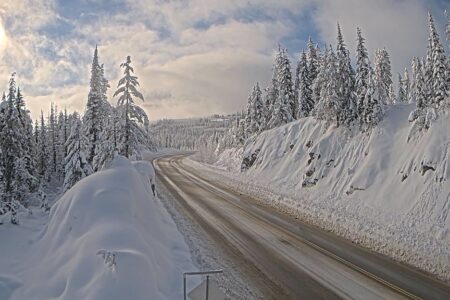Stars and Street Lights
I’ll never forget talking to an exchange student who was living in Rossland last year, who was gushing with excitement about his experience here – so different from what he was used to back home. But it wasn’t the bears and the snow he was talking about, it was the stars.
In many big cities people live and work and go about their lives never seeing the stars, which are obliterated by the spilled light from thousands of streetlights and buildings. Even here in the relative dark of the Kootenays we need to get away from towns to really see them in their full glory.
Too many of our streetlights are not focused on lighting up the street below them, but stream light up and out as well. I know – in my last house the closest streetlight shone straight into my second-storey bedroom window. One smart neighbour apparently blacked out the part of the local light that did the same to his house.
This is more than an inconvenience; it is a waste. It’s wasted money, for one thing; the City of Calgary estimates it saved $1.7 million per year after it changed out its old-style streetlights ten years ago to ones that used less energy and actually lit the streets instead of the sky.
That wasted energy is also bad for the environment. Obviously that’s more of a factor in coal-burning Alberta than here in BC where our electricity is fairly clean, but it’s an issue here as well. Excessive street lighting — and other unnecessary lighting in cities — is also confusing and harmful to some migrating birds.
In Rossland we spend roughly $70,000 per year on lighting up the streets – a big chunk of cash. Is there any way we could reduce that burden on taxpayers, and reduce the environmental impact at the same time?
For starters, a huge part of that money is spent lighting up streets that nobody is using, since the lights are on all night. That’s a realization that’s starting to hit home for cash-strapped municipalities everywhere. In Britain, over half a million streetlights (10% of the total) are shut off or dimmed at night – an eight-fold increase over five years ago.
For another thing, the new energy-efficient LED streetlights use roughly half the energy used by the current high-pressure sodium lights. Electricity costs being high and going nowhere but up, that’s significant. LED lights also last two or three times longer, meaning cost savings down the line on replacement. And they cost not much more to buy and install.
The new streetlights also don’t need to be as bright, since flat lens technology actually focuses the light on the street itself (why did we ever do otherwise?), again meaning less energy used.
Finally, we may not need all the lights we’ve got. The Illuminating Engineering Society of North America has criteria for how much light is needed in what circumstances (obviously the amount differs depending on the location and use). Cities across North America are using those criteria to take out existing lights and reduce streetlight density in new developments.
With all of our municipalities looking for ways to reduce spending, and also mindful of our environmental impact, I predict it won’t be long before this low-hanging fruit is picked, and the beauty of our night skies will be even more impressive than it already is. And nobody will have to block out the wasted light streaming in their bedroom windows!
























